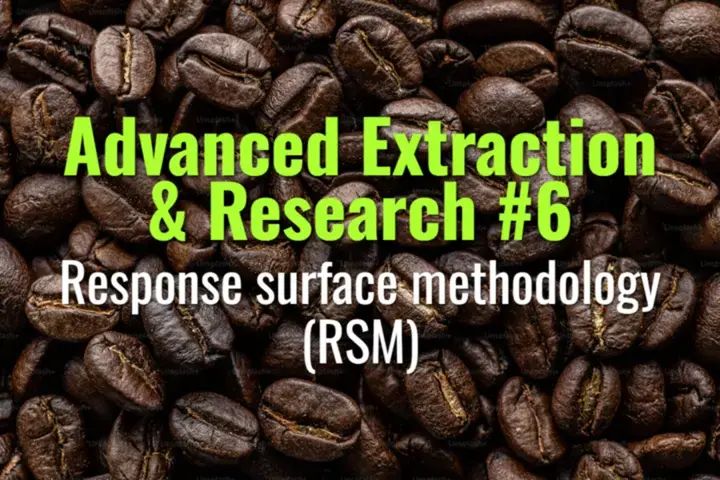Response surface methodology (RSM)
How Response Surface Methodology (RSM) is applied in coffee research to optimize brewing and roasting by modeling variable interactions.
- Coffee Basics Nerds
- 2 min read
Article 6 of 12 in Advanced Extraction & Research/

What is RSM?
- A statistical and mathematical technique for experimental design and optimization.
- Models how multiple input variables influence one or more outcomes.
- Generates a surface (3D curve) showing how variables interact.
Key Variables in Coffee Research
- Brewing: Grind size, water temperature, brew ratio, contact time.
- Espresso: Pressure, preinfusion, dose, yield.
- Roasting: Temperature, time, airflow.
Typical Outcomes Measured
- Extraction yield (EY).
- Total dissolved solids (TDS).
- Sensory attributes (acidity, sweetness, bitterness, body).
- Consumer acceptance scores.
How It Works
- Choose experimental factors (e.g., temperature, grind size).
- Design experiments (central composite, Box–Behnken).
- Collect data on outcomes (EY, sensory scores).
- Fit polynomial models to describe responses.
- Visualize results as contour plots or 3D surfaces.
- Identify optimal operating zones for desired outcomes.
Advantages
- Efficient: Fewer trials needed compared to full factorial designs.
- Detects interactions (e.g., grind size may influence optimal temperature).
- Provides predictive models for decision-making.
Coffee Research Examples
- Optimizing cold brew extraction for sweetness vs caffeine content.
- Balancing espresso brew ratio and pressure for flavor clarity.
- Tuning roast development to maximize acidity while minimizing bitterness.
Practical Implications for Baristas & Roasters
- Highlights trade-offs (e.g., higher EY may reduce clarity).
- Guides recipe development with evidence-based targets.
- Useful for R&D and quality control in specialty coffee.
Summary
Response Surface Methodology (RSM) is a powerful experimental design tool that helps coffee professionals optimize brewing and roasting variables. By modeling interactions, RSM provides actionable insights for achieving better consistency, efficiency, and sensory quality.
You might also like:
- Tags:
- Cold Brew
- Specialty Coffee
- Grind Size
- Quality Control
- Extraction Yield
- Practical Implications
- Dose Yield
- Flavor Clarity
- Water Temperature
- Brew Ratio
- Acidity Sweetness
- Dissolved Solids
- Roast Development
- Yield Ey
- Baristas Roasters
- Total Dissolved
- Trade Offs
- Bitterness Body
- Decision Making
- Coffee Professionals
- Coffee Research
- Key Variables
- Bitterness Practical
- Solids Tds
- Sensory Attributes
- Sweetness Bitterness
- Recipe Development